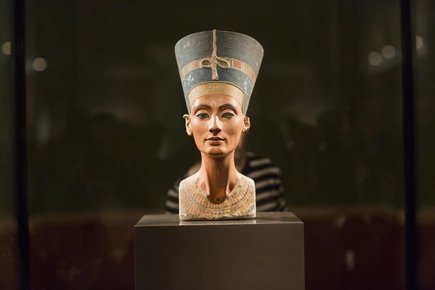
Museum Blindenwerkstatt Otto Weidt
A refuge in times of terror
Documenting the extraordinary courage of one man during the Third Reich, the Museum Blindenwerkstatt Otto Weidt is situated in the old broom and brush workshop, in which many blind and deaf Jews worked. Since 2006, the exhibition has told the story through its displays of well-preserved photographs, documents, personal letters and other artefacts that illustrate the way the workers lived.
Feel and understand: life in hiding
An important producer of brooms and brushes, many of which were destined for the armed forces, Otto Weidt manages to protect a number of his staff from deportation during the Second World War. By obtaining false papers and supplying the workers with food and shelter, he even bribes members of the Gestapo. Today, in the Spandau suburb, the workshop remains almost as it was, with simple wooden floors and workshops fitted with original equipment. Black and white photographs depict scenes of the production, and a picture of Otto Weidt himself hangs on the wall. Letters, poems and postcards of the workers speak of the fear and desperation the people felt, but thank you cards are there as well. They are for food parcels which he sends to the Czech ghetto and concentration camp of Theresienstadt, where some of his former workers are interned. Despite his efforts, some of Weidt’s workers are imprisoned, but the lucky ones manage to hide in a small, windowless room in the furthest corner of the building, the entrance hidden by a clothes cabinet. On the walls are framed photographs of people who have hidden in the Weidt workshop.
What the Museum Blindenwerkstatt Otto Weidt has to offer
- Documents pertaining to the people that survived, including Inge Deutschkron and Georg Licht.
- Photographs of the founder, Otto Weidt.
- Original tools used in broom-making.
- Letters, postcards and photographs of imprisoned workers.
- The hideout in its original condition.
The Jewish cemetery and the abandoned space
A short walk west from the museum takes you to the second oldest Jewish cemetery in Berlin, Friedhof Große Hamburger Straße. In 1671, a group of Jews come to Berlin from Vienna under the special protection of the Elector Friedrich Wilhelm. They settle in nearby Spandauer Tor (Spandau Gate), and here they build their cemetery a year after their arrival. In 1943, the Gestapo orders the cemetery to be destroyed. The graves are desecrated and the cemetery is used as an air raid shelter, with the gravestones being used to reinforce the walls. In 1945, the area is put to its original purpose once again, as the authorities bury masses of civilians and soldiers killed during the Allied raids. In the 1970s, the GDR authorities turn the area into a park.
Philosopher, Moses Mendelssohn is buried here in 1786, and today you’ll find a symbolic tombstone in his name. Preserved gravestones are finally reinstalled in 2008. North of the cemetery, on Koppenplatz, you’ll find a memorial commemorating the Holocaust. Karl Biedermann’s bronze sculpture entitled the Deserted Room depicts a table and two chairs, one of which is overturned. A poem by Nelly Sachs accompanies the piece.
General information on the Museum Blindenwerkstatt Otto Weidt
Take the U8 underground line to Weinmeisterstraße, or take the trains S5, S7 or S75 to Hackescher Markt. Both destinations will take you within a couple of minutes’ walk of the museum. Admission is free and there are guided tours every Sunday at 3pm. There is no need to book for these tours, but do book in advance for group tours or special tours for blind, visually impaired and deaf visitors.
Opening hours
| Monday | |
|---|---|
| Tuesday | |
| Wednesday | |
| Thursday | |
| Friday | |
| Saturday | |
| Sunday |
| Mon - Sun | 10am - 8pm |

